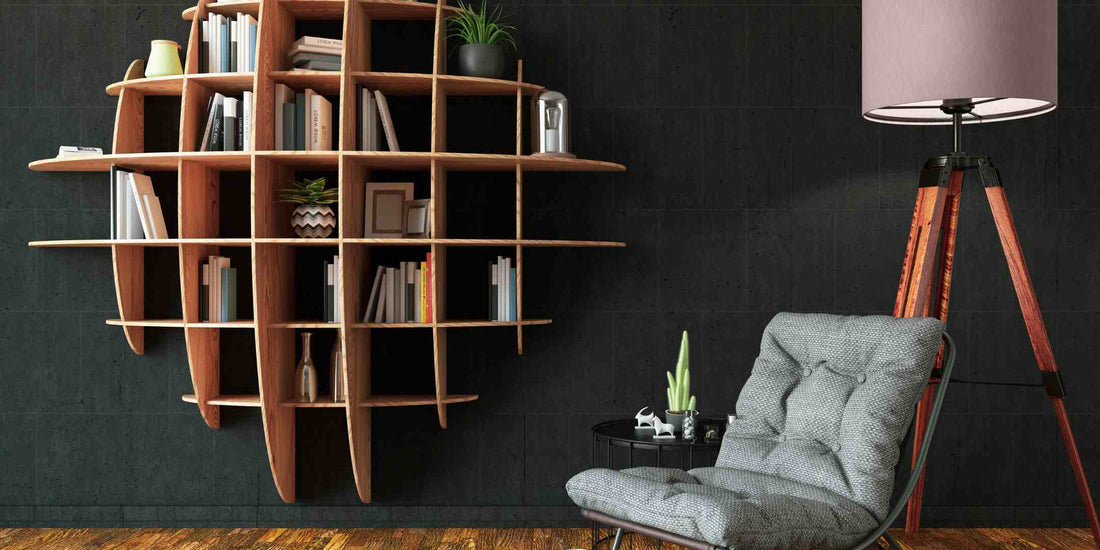
Maximizing Vertical Space: Tips for Small Homes
Share
Regarding small homes, every inch counts, especially the inches you’re not using yet. Let’s talk about the forgotten real estate in your home: the walls. The tall, glorious, often ignored walls. Welcome to the world of vertical space storage.
And this isn’t just about slapping a shelf up and calling it a day. It’s about being intentional, stylish, and a little clever. If you're asking how to fill vertical space in a room, you’re already halfway to a more organized life.
Let’s go all the way.
What Is Vertical Space Meaning in Design?

Vertical space means the area above your floor level up to your ceiling. It's basically everything that’s not sitting directly on the floor. It includes wall height, tall cabinets, stackable storage, and even hanging storage.
The goal is to use that upper space strategically without overwhelming the room. When done correctly, vertical space storage solves clutter problems and elevates your home’s aesthetic.
Entryway:

If your entryway is a clutter trap (keys, bags, shoes, mail… need we go on?), It’s time to look up. Try mounted cubbies or floating shelves above a slim console table. Add hooks or a peg rail for bags and hats.
This is also where a vertical space organizer shines. Examples are wall grids, vertical filing slots, or a slim cabinet with stacked compartments.
Always keep it minimal with uniform baskets or bold by mixing textures and materials.
Kitchen:

Yes, you can double your kitchen storage without knocking down walls. Use magnetic spice racks, wall-mounted pot rails, and high shelving.
For pantries, stack wire baskets or mount racks inside cabinet doors. A rolling cart with vertical tiers works wonders in a tight kitchen corner.
Are you still wondering how to fill vertical space in a room like the kitchen? Hang a pegboard or wall grid for utensils, measuring cups, or cleaning supplies.
Closet:

Closets often have way more height than you realize. Use top shelves for out-of-season clothes or seldom-used items in labeled bins. Invest in stackable boxes or hanging shelves for sweaters, jeans, or shoes.
Want to know how to use vertical space in a closet like a pro? Install a double-hanging rod system: one up top for shirts and another below for pants or skirts.
Use vertical space organizers like hanging shoe racks, cascading hangers, or tension rods for scarves and belts. Don’t forget the back of the door, as it’s prime territory for hooks, racks, or mirrors.
Living Room:

Forget the clunky cabinets. Opt for vertical shelving units, ladder shelves, or even tall bookcases to draw the eye upward. Mix open and closed storage for balance.
Create zones with stacked baskets, display boxes, and wall-mounted picture ledges.
And if you’re wondering how to fill vertical space in an already-crowded room, try adding a tall floor lamp, a piece of oversized vertical art, or a hanging planter.
Bathroom:

Bathrooms are often the smallest, but they’re filled with things you use daily. For tiny bathrooms, the solution is upward movement.
Add shelves above the toilet, wall-mounted cabinets, or slim vertical towers beside the sink. Use magnetic strips for grooming tools and baskets for towels.
One underrated move? A vertical ladder rack for towels. It adds charm and functionality to one.
Bedroom:

In small bedrooms, vertical space storage differentiates chaos and calm. Mount narrow bookshelves beside the bed, use tall dressers instead of wide ones and opt for headboards with built-in cubbies.
Floating nightstands or wall-mounted reading lamps free up floor space while giving you that cozy, stylish look.
Do you want to go even higher? Hang a statement textile or art piece above the bed to draw the eye upward.
Laundry or Utility Areas:

Often tucked away, these zones beg for smart storage. Your go-tos are wall-mounted drying racks, high detergent shelves, and tool pegboards.
Install a tall cabinet with slim pull-out drawers. Use hanging baskets or racks on the doors.
If you're working with a tight nook, consider a vertical space organizer with hooks, baskets, and modular shelves.
Multi-Functional Rooms:

Do you have a space that doubles as a guest room, office, or play area? It’s time to go modular. Use high-wall shelving and floating desks to keep the floor clear.
Storage ottomans, fold-down tables, and Murphy beds benefit from an upward-thinking design approach. The wall space above the doors and windows is perfect for storing rarely used items.
Vertical Space Is A Game-Changer
But that's not just it! It's about styling and making the space feel larger, taller, and more intentional.
So, if you're wondering how to use vertical space in a closet or anywhere else, don't just think about utility. Consider the balance, texture, and visual movement. Mix closed and open storage. Layer heights. Keep the palette tight, but play with materials.
The answer to a cramped space is usually right above your head. You just need to look up, literally.
Happy vertical styling!
